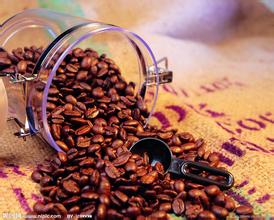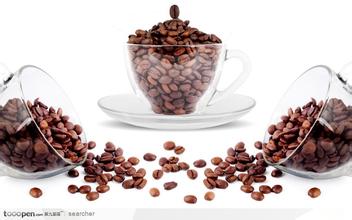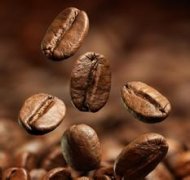Which kind of coffee is more suitable for hand brewing?
Water temperature: boiling water into the cool hand pot is basically about 95 degrees, at this time to grind beans (I use electric mill, hand or grind first …... As DIMLAU said, 95 degrees starts steaming, and when you flush, the water in the pot can start to flush at about 90 degrees. Basically, the water temperature is always in the right state, and you don't have to worry about it without a thermometer.
Powder-water ratio: for those who are too lazy to understand the golden cup, please read the boldface directly. Citing the rule of the fool's version of the golden cup (temporarily based on the American version of the gold cup, based on the average concentration and average extraction rate of American black coffee drinkers' favorite range of nearly 10,000 random samples), the data is 1.15% to 1.35%, and the extraction rate is 18% to 22%. In the stupid version, then what can we control? The ratio of powder to water, the mid-point recommended brewing ratio of SCAA's golden cup rule is 1buzz 18.18SCAE midpoint 1RV 16.6666666, but due to the diversity of brewing methods, and when the roasting degree of modern boutique coffee is generally not deep (not easy to extract) or pay more attention to the extraction of sweet and sour front flavor (tend to low extraction rate). For example, the use of bypass (a large amount of powder extraction before the flavor is injected with water to the appropriate concentration), so the average extraction rate is not enough, so it is recommended to use 1:16 (1 g coffee powder corresponds to 16ml water). Under this powder-to-water ratio, the extraction rate is low and it is easier to reach a concentration of 1.15% to 1.35%.
Steaming: the first part of steaming is actually strong enough for the water to come into full contact with the coffee powder, exhaust the gas, and infiltrate the coffee powder to facilitate subsequent extraction. So there's no stick? There is a Tilafa, but you can't do it? You look good enough to wet the coffee powder. Japanese brewing will be steamed to only one drop, or not dripping and fully infiltrating, it is useless to tell you, scientifically speaking, it is just enough contact with powder and water. BUT, don't let the water stay too much. Due to the exuberant discharge of the gas, the steaming water is difficult to extract the water solution in the coffee. Too much steaming and dripping means less water that can be extracted normally.
Segmented extraction: in fact, it is water injection. In the video, the main variables that mainly rely on immersion extraction are grinding degree and soaking time. Water injection only needs to pay attention to the fact that coffee powder is soaked, and whether the circle is round or not. Whether the water flow is fine or not can be ignored. About 20g powder, so we only need to control the total extraction time at two and a half to three minutes, the general extraction rate will not be too biased, during which time it is horse step water injection or handstand water injection. There are too many contents in detail, and the experimental data can be used as a reference value. According to the experimental data of CBC Cooking Institute, the best cooking time for 60 g coffee powder corresponding to 1000ml water is 4: 6 minutes (without steaming) because the spoiling capacity of hand flushing is generally lower than that of the American trickling filter, so 6 minutes is recommended as the reference time. So, for example, the reference value of my 400ml water is 6 minutes X 0.4 minutes 2 minutes 24 seconds. For example, after steaming 24g coffee powder (the midpoint ratio of SCAE gold cup) in 400ml water, the remaining water can be injected evenly in 2 minutes and 24 seconds.

Important Notice :
前街咖啡 FrontStreet Coffee has moved to new addredd:
FrontStreet Coffee Address: 315,Donghua East Road,GuangZhou
Tel:020 38364473
- Prev

The type of coffee introduces how many kinds of coffee there are and which kind of coffee tastes better
Brazilian coffee: there are many kinds of coffee in Brazil, and most of the coffee has moderate acidity. Its sweet, bitter and mellow tastes are neutral, moderate concentration, smooth and special taste. It is the best mixed bean, known as the backbone of coffee, and the taste of a single product is also good. Colombian coffee: Colombian coffee beans that are roasted and give off a sweet fragrance with a medium acidity
- Next

What kind of coffee tastes better? is individual coffee a brand?
Ways to drink coffee: there are three main ways for domestic people to drink coffee: one is to go to a better coffee shop, such as Starbucks, the second is to go to the supermarket to buy finished coffee, go home to make their own coffee, and the third is to buy coffee beans and grind their own coffee when they go home. Four: the following is mainly about how to make coffee: I think the taste of coffee is good or bad, one is the quality of coffee beans, suggestion
Related
- Does Rose Summer choose Blue, Green or Red? Detailed explanation of Rose Summer Coffee plots and Classification in Panamanian Jade Manor
- What is the difference between the origin, producing area, processing plant, cooperative and manor of coffee beans?
- How fine does the espresso powder fit? how to grind the espresso?
- Sca coffee roasting degree color card coffee roasting degree 8 roasting color values what do you mean?
- The practice of lattes: how to make lattes at home
- Introduction to Indonesian Fine Coffee beans-- Java Coffee producing area of Indonesian Arabica Coffee
- How much will the flavor of light and medium roasted rose summer be expressed? What baking level is rose summer suitable for?
- Introduction to the characteristics of washing, sun-drying or wet-planing coffee commonly used in Mantenin, Indonesia
- Price characteristics of Arabica Coffee Bean Starbucks introduction to Manning Coffee Bean Taste producing area Variety Manor
- What is the authentic Yega flavor? What are the flavor characteristics of the really excellent Yejasuffi coffee beans?

